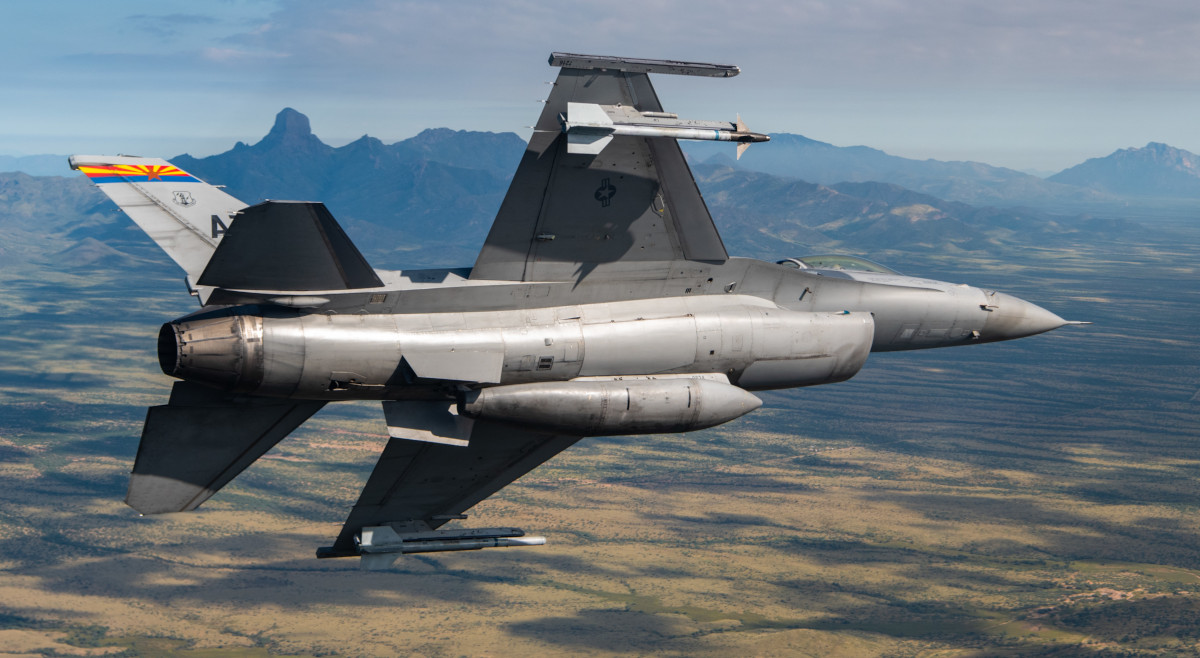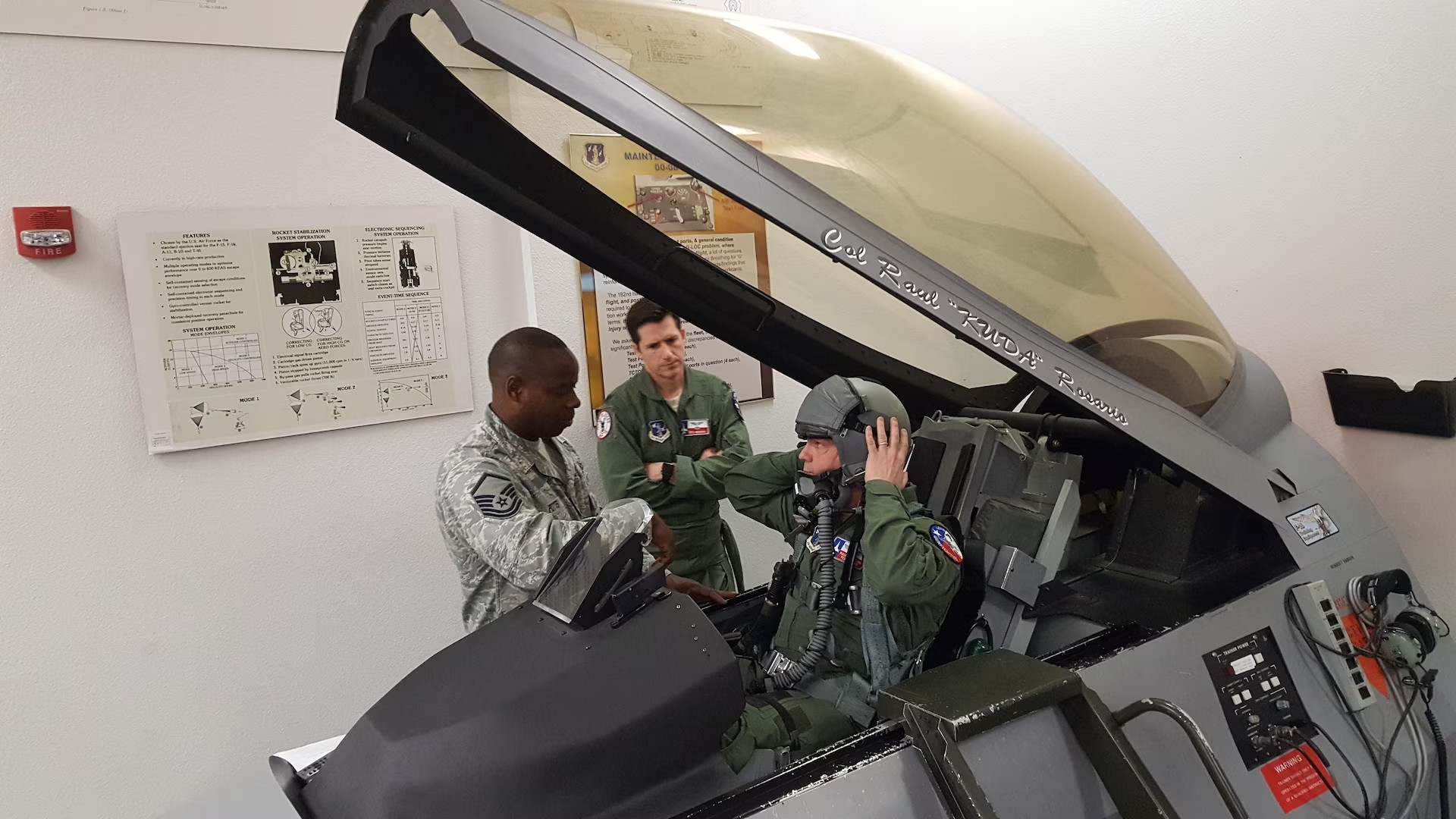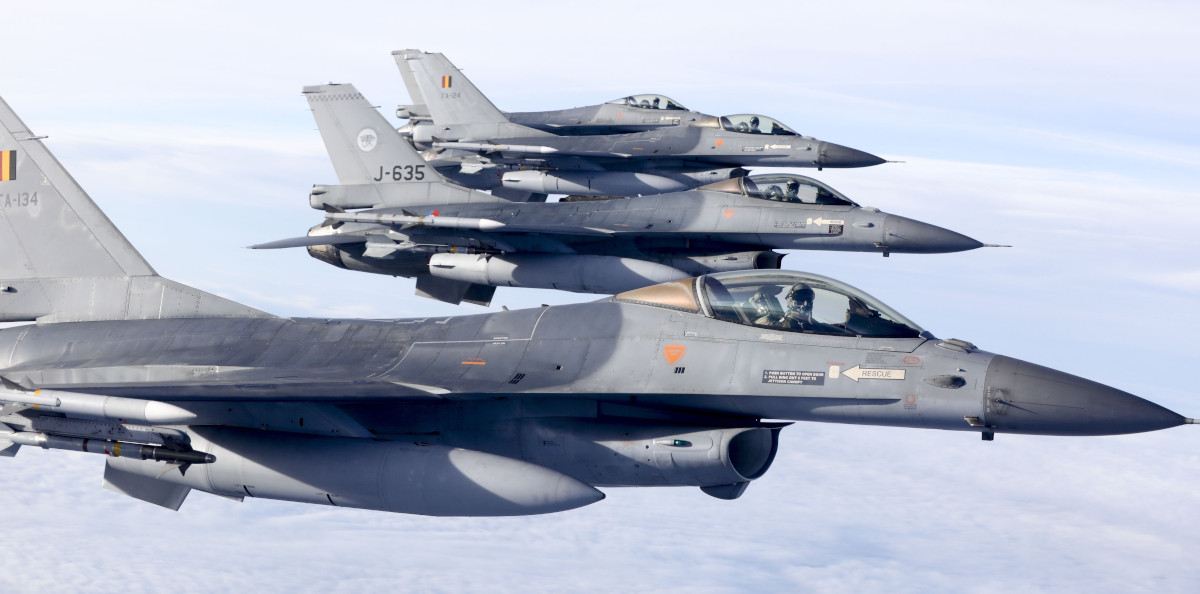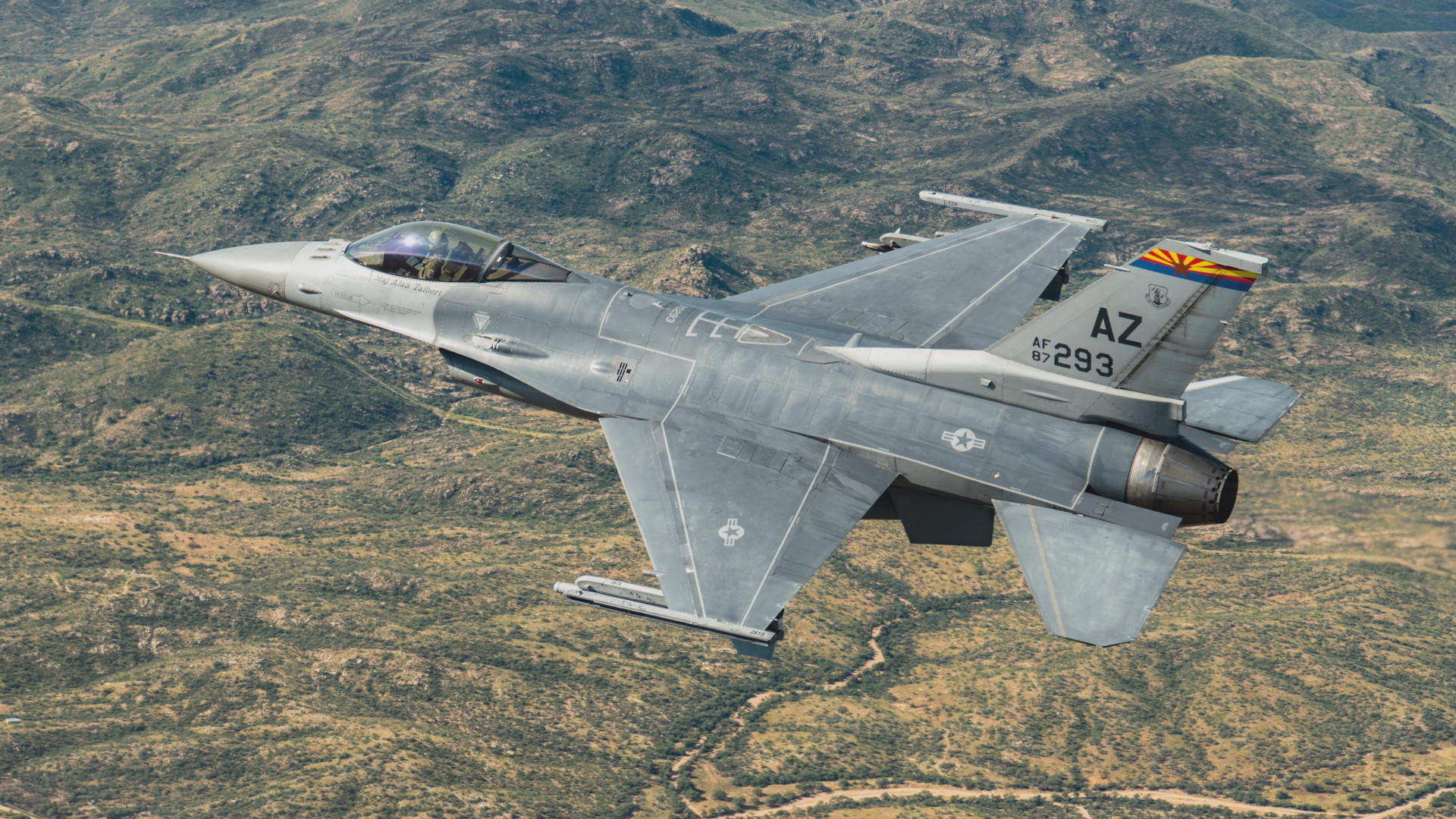Ukrainian fighter pilots could be trained in the basic operations of American-made F-16 Viper fighter jets in around four months, according to a U.S. Air Force assessment conducted earlier this year.
The disclosure of these findings comes as pressure builds on the U.S. government to approve the transfer of Vipers to the Ukrainian Air Force. Four months for a very basic F-16 skill set is very close to the training schedule estimates that F-16 pilots provided to The War Zone for a feature published back in February. Exactly how relevant that minimal skill set would be over the battlefield is still a question that needs to be answered.

Yahoo News was the first to report on the Baseline Pilot Assessment (BPA) that the Air Force conducted involving the pair of Ukrainian fliers this past Spring after obtaining a copy of the final report. The document says it is releasable outside of the U.S. government only to approved individuals from Belgium, Bulgaria, Denmark, Great Britain, Norway, Poland, Portugal, Romania, and the Netherlands. With the exception of Great Britain, all of these countries are F-16 operators.
The Ukrainian pilots who took part in the BPA are not named, but are identified in the report as a Su-27 Flanker pilot holding the rank of Captain and a Major primarily flying the MiG-29 Fulcrum. Soviet-designed Su-27s and MiG-29s make up the bulk of the Ukrainian Air Force’s current tactical combat jet fleets.


The Arizona Air National Guard’s 162nd Wing hosted the BPA, which was conducted entirely using unspecified simulators on the ground and with minimal direction, at Morris Air National Guard Base in Tucson, Arizona. The assessment ran from February 27 to March 10, 2023. The report notes that the original plan had been to do this in December 2022, but that U.S. government funding issues forced its rescheduling. Reports had emerged in March that this assessment was occurring, but details were limited at that time.
Four unnamed instructor pilots from the 162nd Wing – three majors and a lieutenant colonel – observed the simulator sessions and gave their feedback. To give a sense of the qualifications of these individuals, the least experienced of them was a major with four years’ worth of experience at an F-16 formal training unit, or FTU, and 1,500 hours of flying time in Vipers personally, according to the report. The lieutenant colonel had the most experience, with more than six years at an FTU and 2,300 hours of F-16 flying time.
The BPA had the following three main objectives, according to the report:
- “Observe Ukrainian pilots to establish a baseline assessment of skills and determine feasibility of training on Western 4th generation fighter aircraft.”
- “Observe Ukrainian pilots to aid in development of a specialized training syllabus to determine an accurate training timeline to transition to Western fighter aircraft.”
- “Informally assess English language aptitude of Ukrainian pilots.”

After the evaluation, which consisted of nine separate simulator events with a total time of 11 and a half hours, the F-16 instructor pilots concluded that the two Ukrainians had demonstrated above-average skill progression. This included demonstrated ability in the simulator “to successfully land the aircraft from an overhead simulated flameout (SFO) pattern,” which the report describes as a “relatively technical skill.”
“After a single demonstration of an overhead pattern, both pilots were able to successfully recover to an overhead touch-and-go pattern on each simulator,” the report notes. “Pilots were able to execute mock attacks based on parameters communicated while they were flying the sim.”
Demonstrated low-level flight skill in the simulator was also assessed to be “above average” even with the pilots having to adapt “to the increased task load in the low-level environment of Southern Arizona.”

The report concludes that, “given the skillset demonstrated by the UKR AF pilots, and the requirement to develop a specialized syllabus only focused on min required tasks, ~4 months is a realistic training timeline.” This is broken into approximately eight weeks of transition training, two additional weeks or so of low-level step-down training, and then around three weeks of air-to-air combat training.
The air-to-air phase would be “focused on single-ship and two-ship intercepts and basic WVR [within visual range] employment of a single radar missile type and infrared missile type,” according to the report. The types of missiles in question are not stated, but variants of the AIM-120 Advanced Miedum-Range Air-to-Air Missile (AMRAAM) and AIM-9 Sidewinder are the default radar and infrared-homing types that U.S. Air Force F-16s carry. Ukrainian forces have actually received AIM-120s already, but for ground-based use as part of the National Advanced Surface-to-Air Missile System (NASAMS).
A Ukrainian pilot known by callsign Juice has specifically stressed how significant a boost in capability F-16s armed with AIM-120s would be in past interviews with The War Zone. A report in March indicated that U.S. officials were looking into whether it might be realistic to integrate the AMRAAM onto Ukraine’s existing Soviet-design fighters. There are significant technical challenges to realizing such a capability though.

Altogether, the four-month training estimate is significantly lower than the 18 to 24-month timeframe U.S. officials have publicly stated in the past.
“The current Training Task List (TTL) that guides syllabus development lists approximately
250 tasks that must be taught and demonstrated up to a competent level upon completion of
Mission Qualification Training (MQT) – when a pilot is considered a mission capable pilot,” the 162nd Wing’s report explains. “Eliminating events that would not be required for initial UKR AF training could reduce this TTL down to approximately 160 tasks.”
“Utilizing a waterfall approach to accomplish fighter training, general language training, and specialized language training would allow for the training of 12-14 pilots in approximately 12 months,” the report adds.
It is worth noting that the abridged training syllabus would eliminate specific training on U.S. instrument approach procedures, Basic Fighter maneuvers (BFM), Air Combat Maneuvering (ACM), Air-to-Air Refueling (AAR), Close Air Support (CAS), and Basic Surface Attack (BSA). Air-to-air refueling is certainly not applicable to the current situation in Ukraine, where operations are conducted in local airspace, and the country doesn’t have suitable tankers anyway.
What impacts skipping the other training elements might have is unclear, and one would think some of those elements would be useful to Ukraine. The question as to what would be required of a minimally trained F-16 pilot to still be combat relevant in Ukraine still remains. Some of these extra modules could be added at the expense of time though.

More experienced Ukrainian fighter pilots would have their own relevant skill sets that could translate to flying in an F-16. This looks to have been demonstrated in the simulator sessions, at least to a degree. The two aviators from Ukraine apparently repeatedly reverted to using Soviet-standard formation flying procedures rather than the U.S. ones explained to them by their American observers. There is no indication from the BPA report that this caused any significant issues, however.
The BPA report does highlight a lack of English language skills as a concerning issue, especially when it came to the Ukrainian pilots being able to read instruments and displays. The English skill level of either pilot from Ukraine is unclear, as is how much of the assessment may have been conducted with the help of interpreters. It does say that “there was noted improvement of English aptitude over the two-week assessment.”
The BPA’s findings do also include warnings against drawing broader conclusions from its results given the limitations of the assessment, including the small data set (just two Ukrainian pilots), only having a short amount of simulator time in total, and the fact that no formal training or other instruction was given. All of this was done at the unclassified level and without any “previously established precedent to host an event like this,” the report notes.
All told, the event seems to have been extremely informal, possibly due to funding limitations and other factors. The final report recommends conducting a larger formal training event to better assess the situation. It’s unknown whether any such event has since occurred or is scheduled to take place in the United States or elsewhere.

Regardless, the report’s findings are significant given the steadily building pressure on the U.S. government to either transfer F-16s to Ukraine or authorize third parties to do so. Vipers in service anywhere in the world are subject to various U.S. export controls.
Ukrainian officials have made no secret of their interest in acquiring F-16s, or other more modern Western combat jets, to supplement and perhaps eventually supplant their Soviet-era fleets. Pressure on American authorities to at least facilitate such a transfer increasingly looks to be coming from NATO allies, too.
“It’s up to the White House to decide if it wants to release that technology,” U.K. Defense Secretary Ben Wallace told reporters yesterday. “We don’t have F-16 pilots, but we can help the pipeline.”
“This summer we will commence an elementary flying phase for cohorts of Ukrainian pilots to learn basic training,” the British government announced earlier this week. “This will adapt the program used by U.K. pilots to provide Ukrainians with piloting skills they can apply to different kinds of aircraft. This training goes hand in hand with U.K. efforts to work with other countries on providing F-16 jets — Ukraine’s fighter jets of choice.”
Wallace’s comments yesterday had come after a meeting in Berlin with German Defense Minister Boris Pistorius. Pistorius said his country didn’t have the relevant resources to contribute to any international coalition to send fighter jets to the Ukrainian Air Force, something that Ukraine’s President Volodymyr Zelensky has called for.
This week Belgium’s government said they would be in a position to help with F-16 pilot training. When asked this week about potential F-16 transfers, Dutch and Norwegian officials demurred in their responses.
In January, authorities in the Netherlands had indicated they’d be open to sending F-16s to Ukraine, before walking back those comments. Danish officials have said their country has at least looked into doing the same. The Ukrainian government has engaged with Poland about acquiring some of their Vipers, as well.

It is interesting to remember here that the 162nd Wing’s BPA report was cleared for release to Belgian, British, Danish, Dutch, Norwegian, and Polish officials, among others. This raises the question of whether the Air Force’s assessment may be having an impact, at least on some level, on this broader decision-making regarding future F-16 deliveries to Ukraine.
U.S. officials have repeatedly balked at the idea of sending F-16s to Ukraine directly, arguing that there are other more pressing military aid requirements, especially ground-based air and missile defenses.
“Our priority has been giving Ukraine the air defense systems that they need, and also their other priorities [which] include armor and artillery,” Deputy Pentagon Press Secretary Sabrina Singh said just today at a routine briefing. “That’s what we’ve been focused on with our packages but… when it comes to F-16s, I just have nothing new to announce today.”
At the same time, American authorities may be softening on the idea of third-party transfers. It’s also worth noting that just in the past year and a half or so, policies regarding what the U.S. is and isn’t willing to send to the Ukrainian forces have evolved significantly. U.S. military assistance packages just in the past six months have steadily included more advanced weapon systems, including Abrams tanks and Patriot surface-to-air missile systems.
Nearly 14 months ago, The War Zone argued that Western 4th generation fighter training for Ukrainian pilots should have begun then. The fact that the U.S. is just now working through very preliminary assessments on what it would take to do so is unfortunate. Western fighters for Ukraine are a long-lead item regardless and something that will be needed to ensure Ukraine’s security for years to come, even beyond the current all-out war with Russia.
Regardless, the emergence of this U.S. Air Force assessment that Ukrainian pilots could be trained to fly F-16s relatively quickly will undoubtedly add to the already growing chorus of calls to send these jets to that country.
Contact the author: joe@thedrive.com
